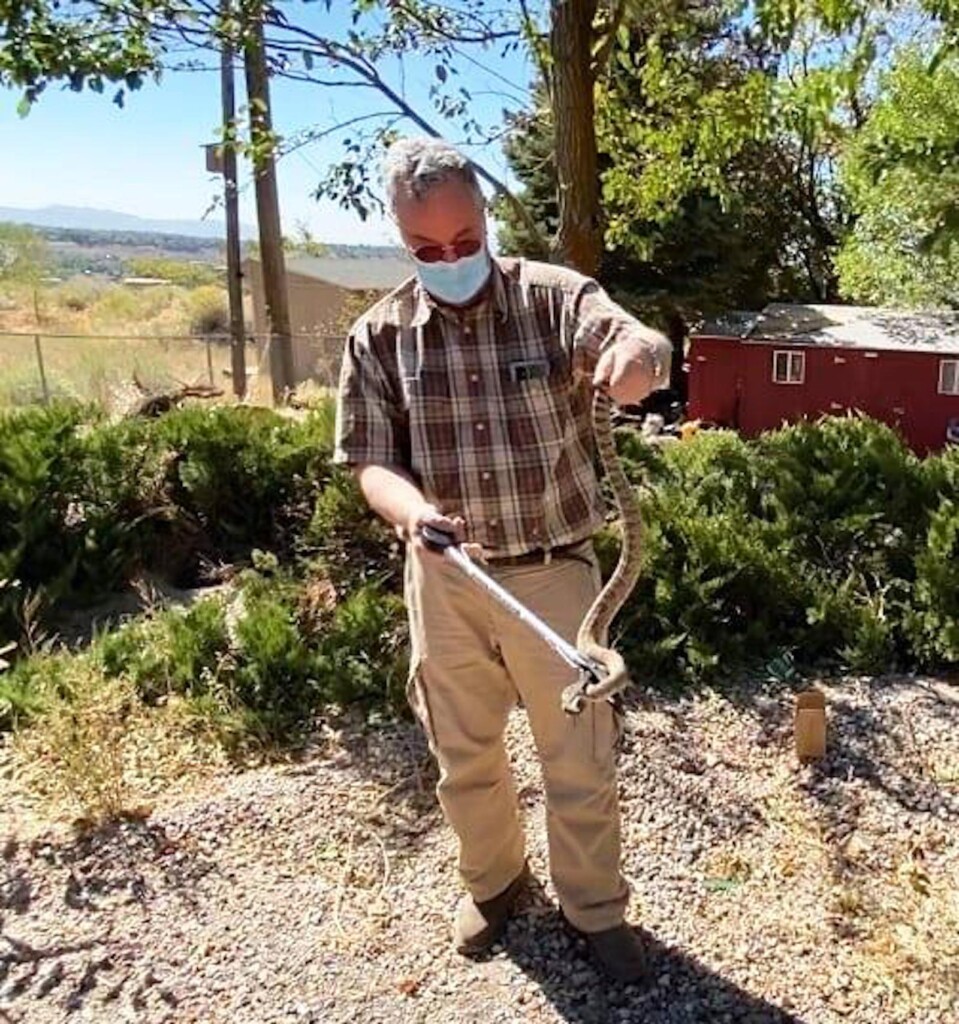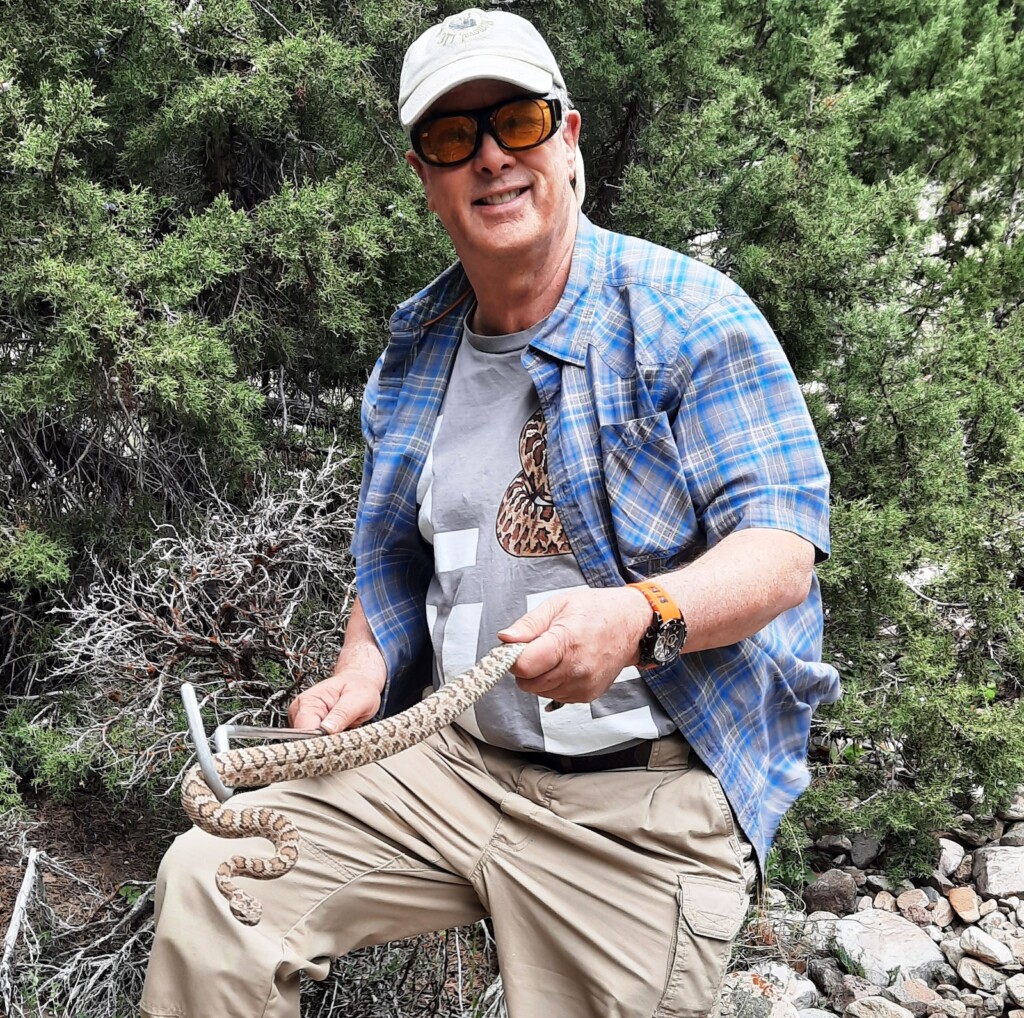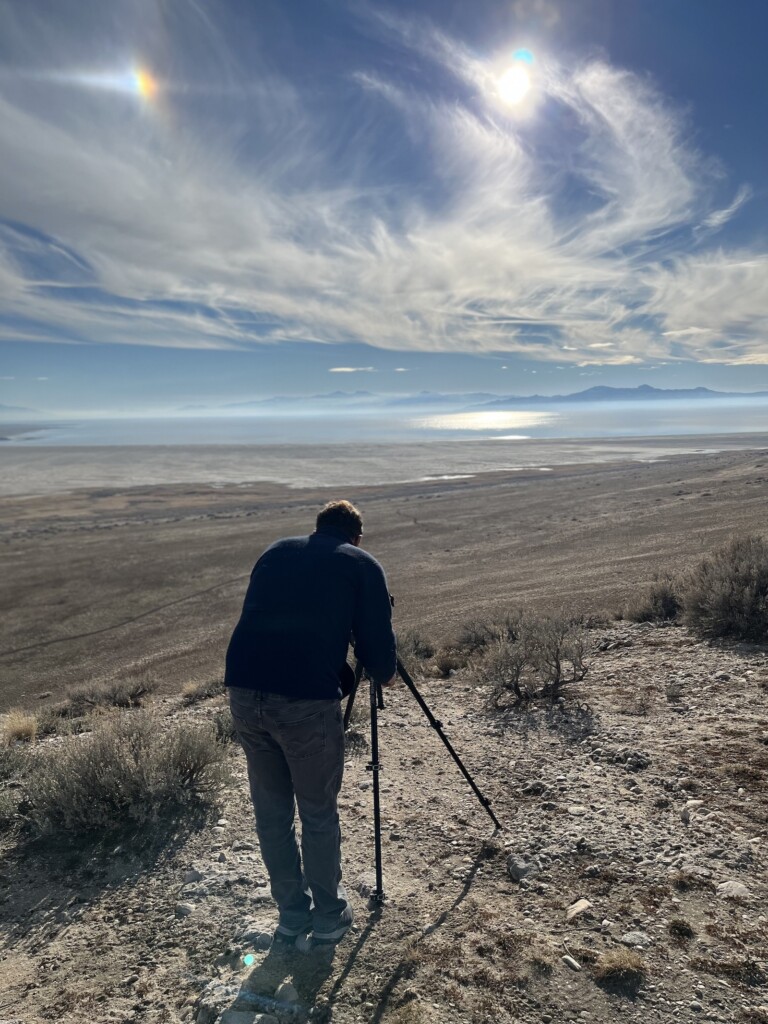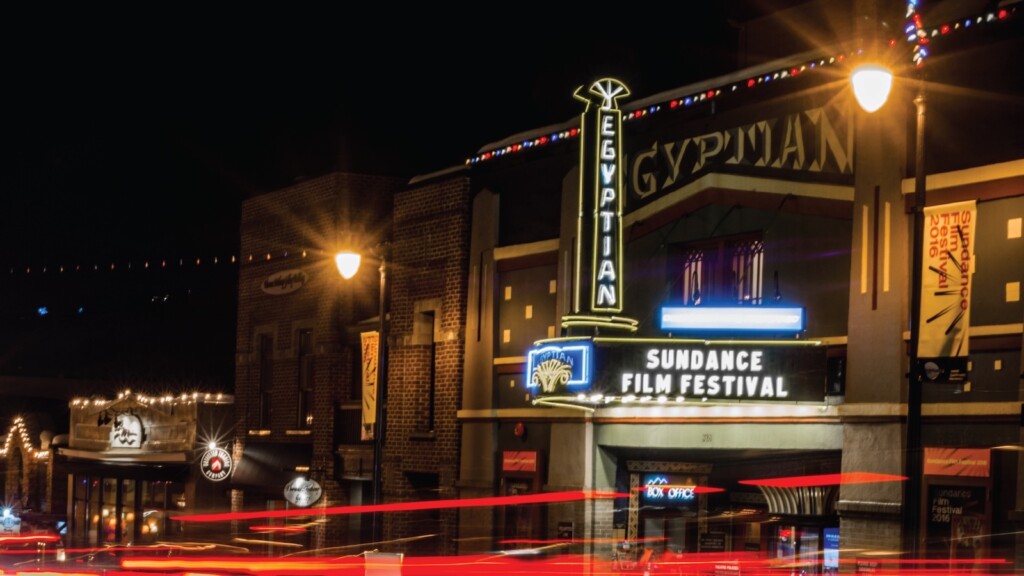Utah Stories copy editor Dave Jensen worked for three seasons on the set of Kevin Costner’s Yellowstone series in multiple locations, and he has some tales to tell!
Until recently, when a health condition made it too difficult, Jensen was the owner of Wasatch Snake Removal, LLC, — the only Utah-based company licensed by the Utah State Division of Wildlife Resources to relocate urban rattlesnakes statewide for the safety of snakes and people.
From 2014 until the fall of 2022, Jensen and his team of eight relocators worked on call, relocating “nuisance” rattlesnakes for Wasatch Front homeowners, business owners, police departments, The University of Utah, The Natural History Museum, and many other state and private entities.
“Protecting rattlesnakes and teaching people about them has always been a deeply important cause for me,” Jensen said, “because snakes are such vital members of healthy ecosystems. Most of our customers know this, and they call us because they don’t want anything bad to happen to the snake in their yard.”
One of the perks of being an urban snake relocator is that movie productions are required to have a snake wrangler on set, and for that reason, Wasatch Snake Removal is registered with the Utah Film Commission.

“It’s a liability issue,” Jensen explained. “Most sets have a paramedic, a security officer, and a snake wrangler at their outdoor shooting locations. That way, they can’t be sued if someone gets injured, property gets stolen, or someone gets bitten by a snake. They can say they took all the proper precautions.”
In 2015, when Don Johnson was in Utah filming Blood and Oil for ABC, Jensen would drive to the sets in Summit and Wasatch Counties. His job was to be the first to enter a location and clear it of snakes for the safety of the actors and crew, and to be on the lookout for curious snakes that might crawl into the area during filming. California film crews do not want to see a snake. Any snake.
“Those were long days,” Jensen said. Time is money, and a shoot will last anywhere from 10 to 16 hours. It’s hot, tiring, often boring work, but the food and money are good!”
One morning, the last van leaving the staging area for the set was carrying the stars of the show, with the exception of Don Johnson. Jensen caught a ride with them.
“Max Theriot is a really nice guy, and very talkative,” Jensen recalled.
Jensen was present for many of Yellowstone’s iconic scenes. He watched Kevin Costner and other cast members rehearse their lines, but didn’t get a chance to meet him. Then, in the fall of 2020, after filming at various locations all summer, Jensen was called to a Yellowstone set just outside of Henefer.
“It was a chilly morning in October, and snake season was over. There was a skiff of snow on the ground. I tried to tell them they didn’t need me that day because snakes don’t come out in those conditions, but they insisted. They were filming a scene with live vultures on the side of a mountain road, and there must have been 200 people there. We were all wearing jackets, gloves and hats, and there I was, walking around with a snake stick and bucket. I felt like an idiot. A truck door opened and a man’s voice said, ‘Catch any snakes yet?’ It was Kevin Costner. ‘I think they all froze to death last night,’ I answered. He laughed and closed the door.”
Jensen and his team worked on several productions over the past nine years, including Sonic the Hedgehog ‘Blue Blur’, The Happy Worker (unreleased), an unnamed Disney production, Costner’s Horizon series, a foreign production, and as a personal snake wrangler for singer Kelsea Ballerini.
Ultimately, his goal was to have Wasatch Snake Removal listed in the credits of at least one major motion picture, but that didn’t happen. Most of the locally-filmed productions were for television only, and the really big ones often fly their own snake wranglers in from Los Angeles, even though it costs them more.
Jensen is proud of the work he and his team did. “We met a lot of nice people and had a lot of fun. Today, when I watch a show like Yellowstone, I know how much time and effort went into creating those scenes,” he said.
Featured image by Jordan Miner.






